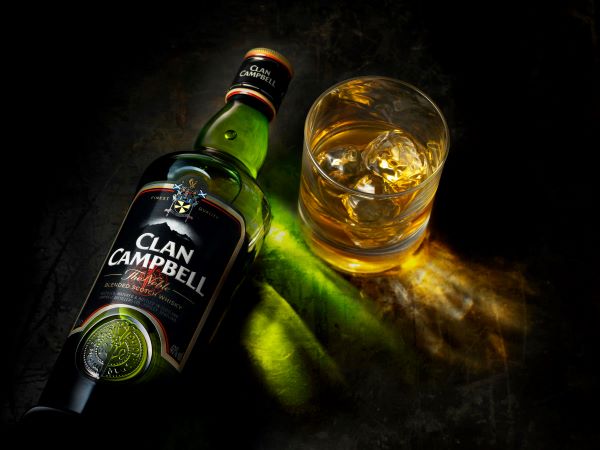A Postcard from France
As the Paris Olympics beckon, France remains in gold medal position for Scotch as its biggest global market by volume. But there are signs of distillers losing the generation game as younger consumers switch off, Richard Woodard discovers …
From Olympic fever to snap elections, France features strongly in the news headlines this summer. You'd think that the visit of the world's biggest sporting event to Paris would be a terrific opportunity for Scotch whisky to exploit, but there's just one snag: the Loi Evin.
France's drastic anti-booze legislation forbids any direct association between alcohol and sport, so the big-hitting brands in what remains Scotch whisky's biggest global market are left twiddling their thumbs and hoping for the best.
Some 15m people are expected to come to France for the games, but only about 22% of them are reckoned to have tickets for the myriad sporting events on offer – leaving a healthy chunk of people who will be there for the buzz, and – hopefully – the bars.
Sebastien Borda, marketing director – business acceleration at Chivas Brothers, describes the influx of visitors as "a prime opportunity for brands to connect with and capture the imaginations of new consumers they might not traditionally reach".

Not a moment too soon. "After two record years for spirits during 2021-22, the recent context has been less favourable, and the Scotch whisky market has indeed experienced some difficulties in terms of volume," says Anne Martin, marketing director at Dugas, the spirits distributor acquired by Stock Spirits in 2023, when it also picked up the Clan Campbell blended Scotch brand (ranked third in France) from Pernod Ricard.
Martin quotes IWSR numbers that show a -2.6% volume CAGR (compound annual growth rate) decline between 2020 and 2023 for Scotch as a whole in France. Even so, it remains comfortably the country's biggest spirits category, with just over 30% of total volumes.
A spokesperson for La Martiniquaise, owner of three of the top five Scotch brands in France (William Peel (1), Sir Edward's (4) and Label 5 (5)), goes further, describing the category as in "structural decline for both blends and malts", adding that sales in Grande Distribution (big retailers) are down -4.5% this year.
Slow volume decline in France is nothing new for Scotch; not so long ago, the market ceded its world-leading position to India, only to snatch it back again. The hope in the past has been that such declines would be offset by gains at higher price points, and among single malts in particular. But the cost-of-living crisis has – temporarily at least – hampered that.
"Inflation has favoured the development of private labels on the one hand, but also that of mainstream brands, of which we are a part – in particular, the large, two-litre format, whose price per litre is a strong argument in this context," says the La Martiniquaise spokesperson.
There is still some growth at the very highest price levels – where volumes are tiny – but it is the traditional heart of the Scotch category, including ‘standard-' and ‘value-priced' blends, that is proving most resilient. Meanwhile, the most substantial losses are occurring among premium and super-premium products. Premiumisation? Pas ici.
The question is whether this is a short-lived phenomenon linked to inflation, spiralling energy costs and the general feeling of malaise permeating France (and so many other Western European nations) at the moment – or whether the trend will persist. Borda, for one, opts for the former, highlighting longer-term (2019-2023) gains for the premium price tier and describing whisky consumption in France as "evolving, reflecting changing consumer preferences".
He adds: "While the standard Scotch whisky segment remains dominant overall in France for the time being, there's a huge amount of growth potential for premium whisky brands. We have seen this with some of our own super-premium-and-above products, including Chivas Regal 18 and Chivas Regal XV, which have increased in net value by circa +20% each since 2019 in the French market." Nonetheless, Ballantine's remains Chivas' biggest volume play in France, ranking as the third-largest brand.
If Scotch is to continue to thrive in France at any price level, it faces generational challenges. Put simply, the French Scotch consumer is ageing (and not especially diverse in racial or gender terms), so the category needs to pull in people from outside its traditional demographic of older white men.
Chivas is taking the lifestyle route here, pairing Chivas Regal with French jewellery artist Dolly Cohen (worn by the likes of Beyoncé, Madonna and Rihanna) and luxury fashion house Balmain. As Borda puts it, the brand is "engaging with newer whisky consumers through cultural events that celebrate inclusivity and authenticity".

At the same time, Dugas is pressing the reset button on Clan Campbell in France, having only fully taken over distribution in March. Martin promises to "revitalise" it via a new brand platform, significant advertising investment and product innovations – not to mention the planned construction of a £25m new malt distillery for Clan Campbell at Inveraray Castle in Argyll, scheduled for completion in 2027.
While admitting that there are challenges ahead for the category in terms of changing perceptions and recruiting younger consumers, Martin nonetheless remains "confident" in Scotch's ability to stabilise and return to growth in France.
If that's to happen, there's a lot of hard work to be done by the industry in the years ahead. But then Scotch is used to looking beyond the immediate horizon, in terms of production and market performance. If there was a Spirits Olympics, it'd be unlikely to reach the podium in the 100 metres – but you'd be a fool to dismiss its chances in the marathon.

Richard Woodard has been writing about spirits and wine for 20 years, editing and contributing to a number of magazines and websites, including Decanter, The Spirits Business, just-drinks.com and Club Oenologique. He was also one of the founding editors of Scotchwhisky.com.




